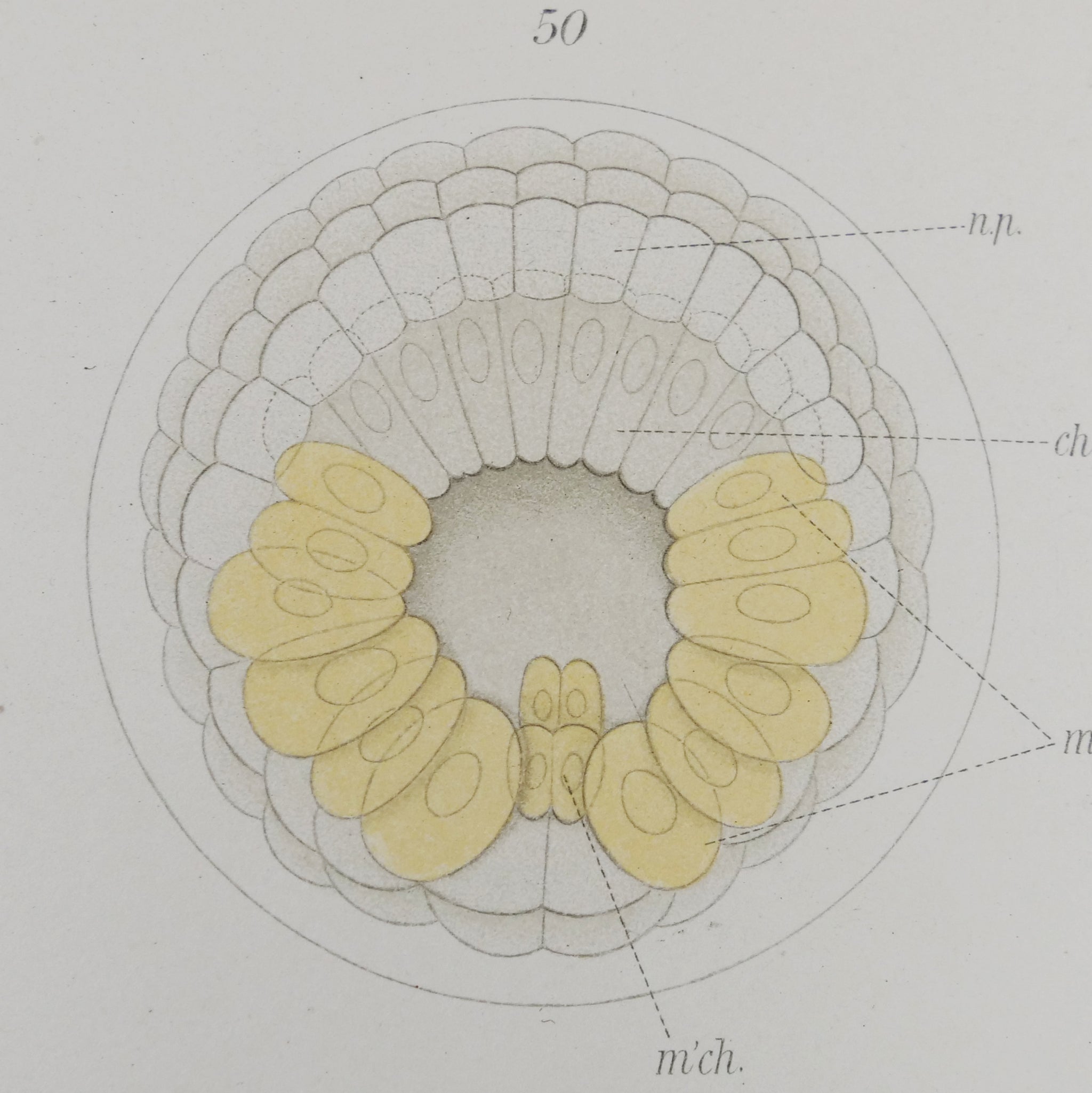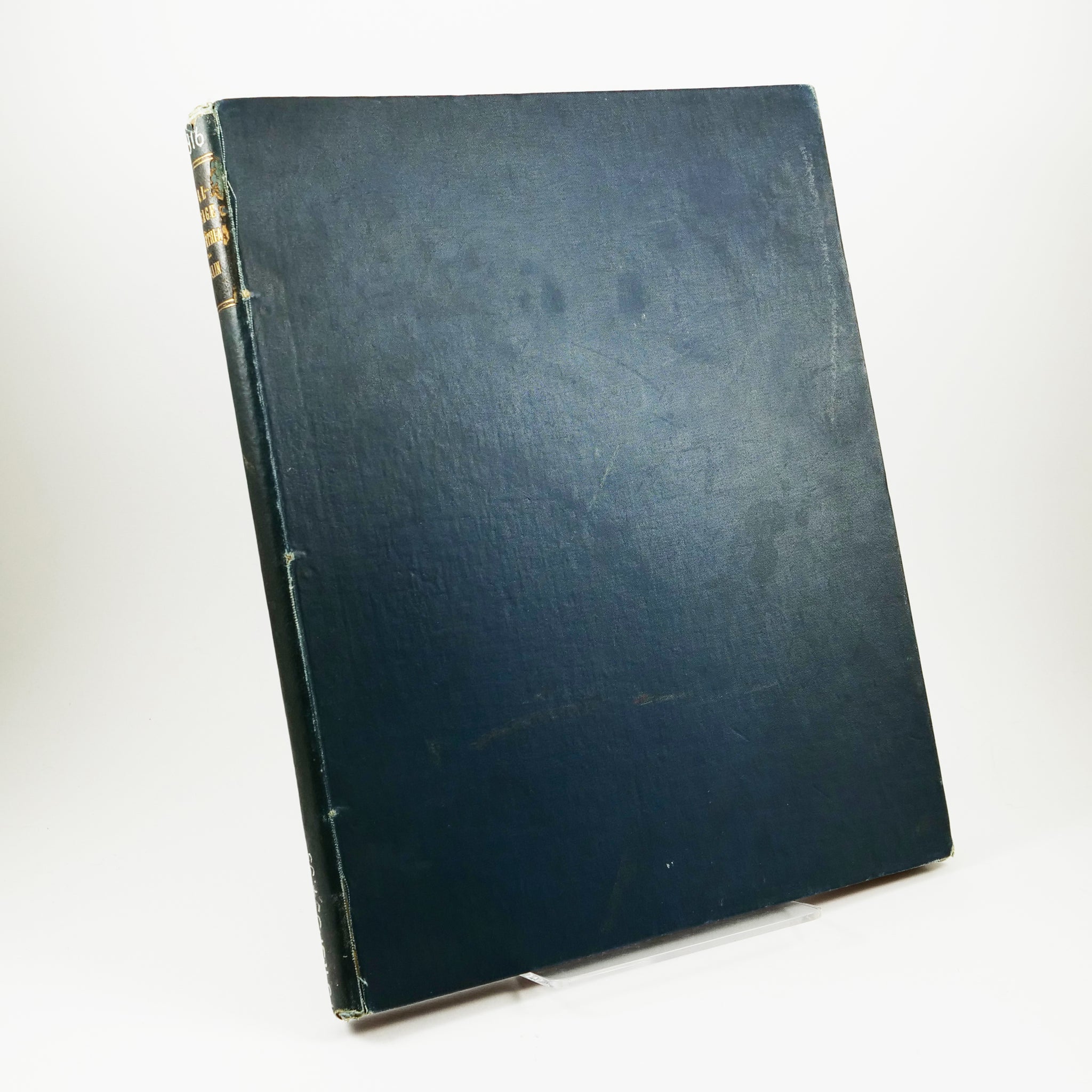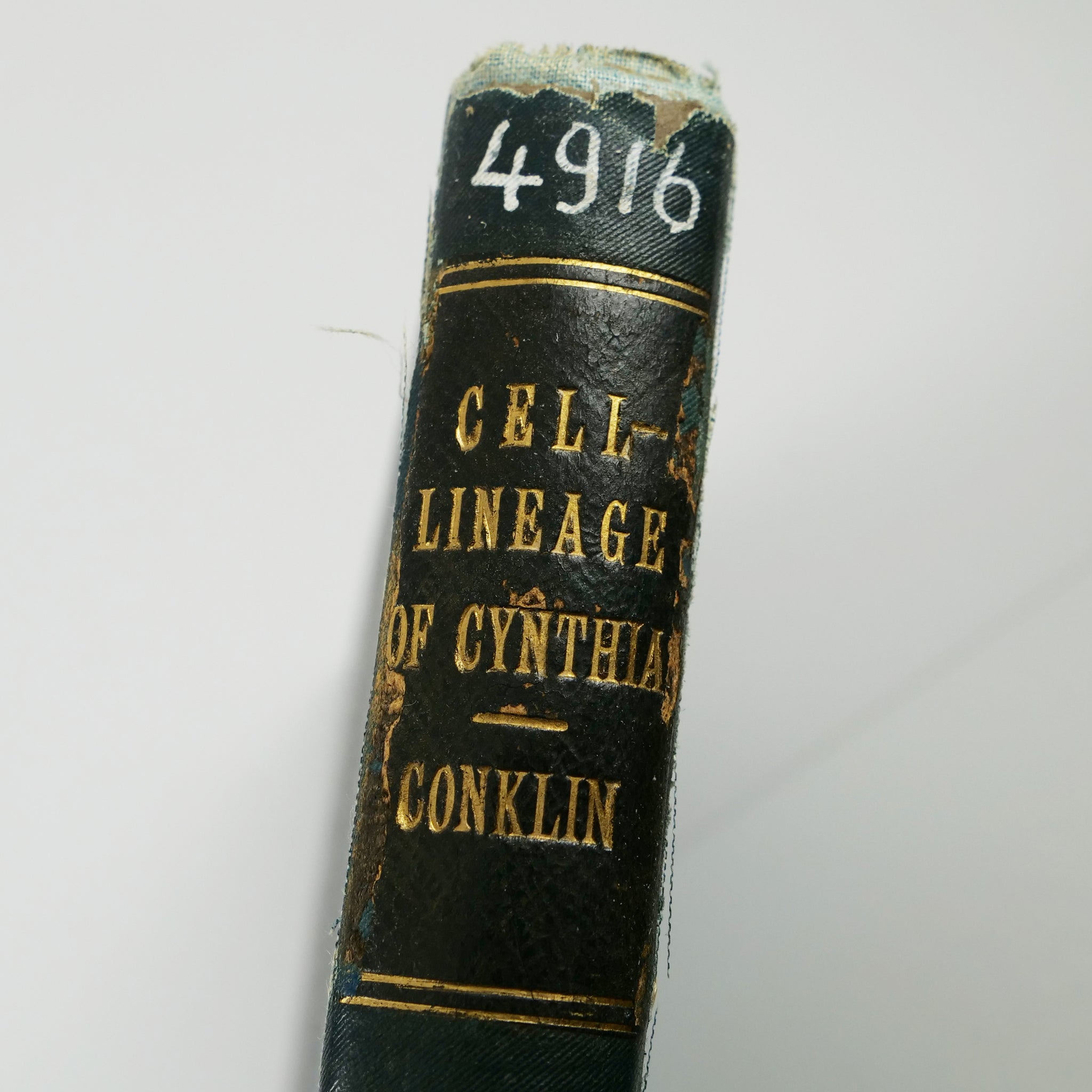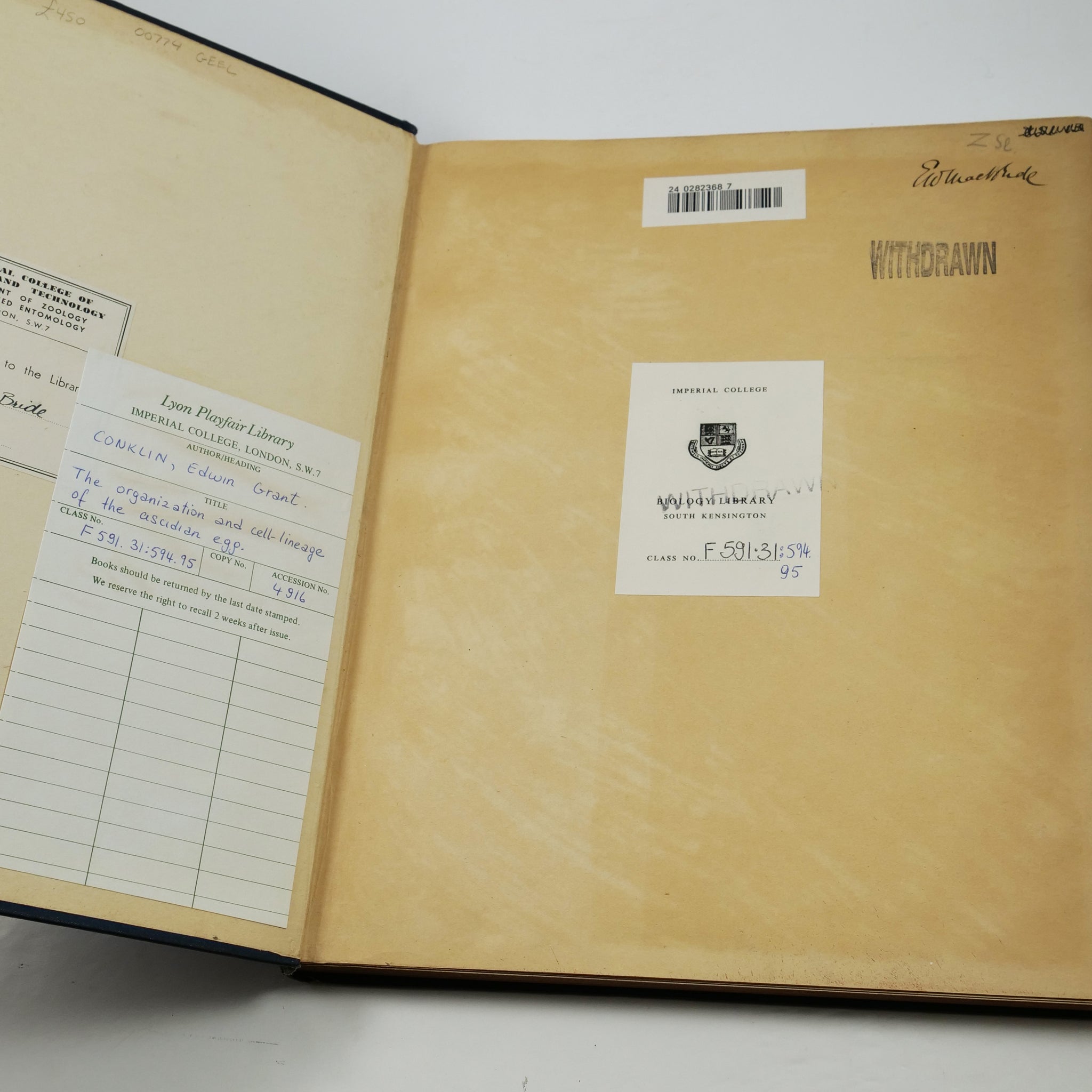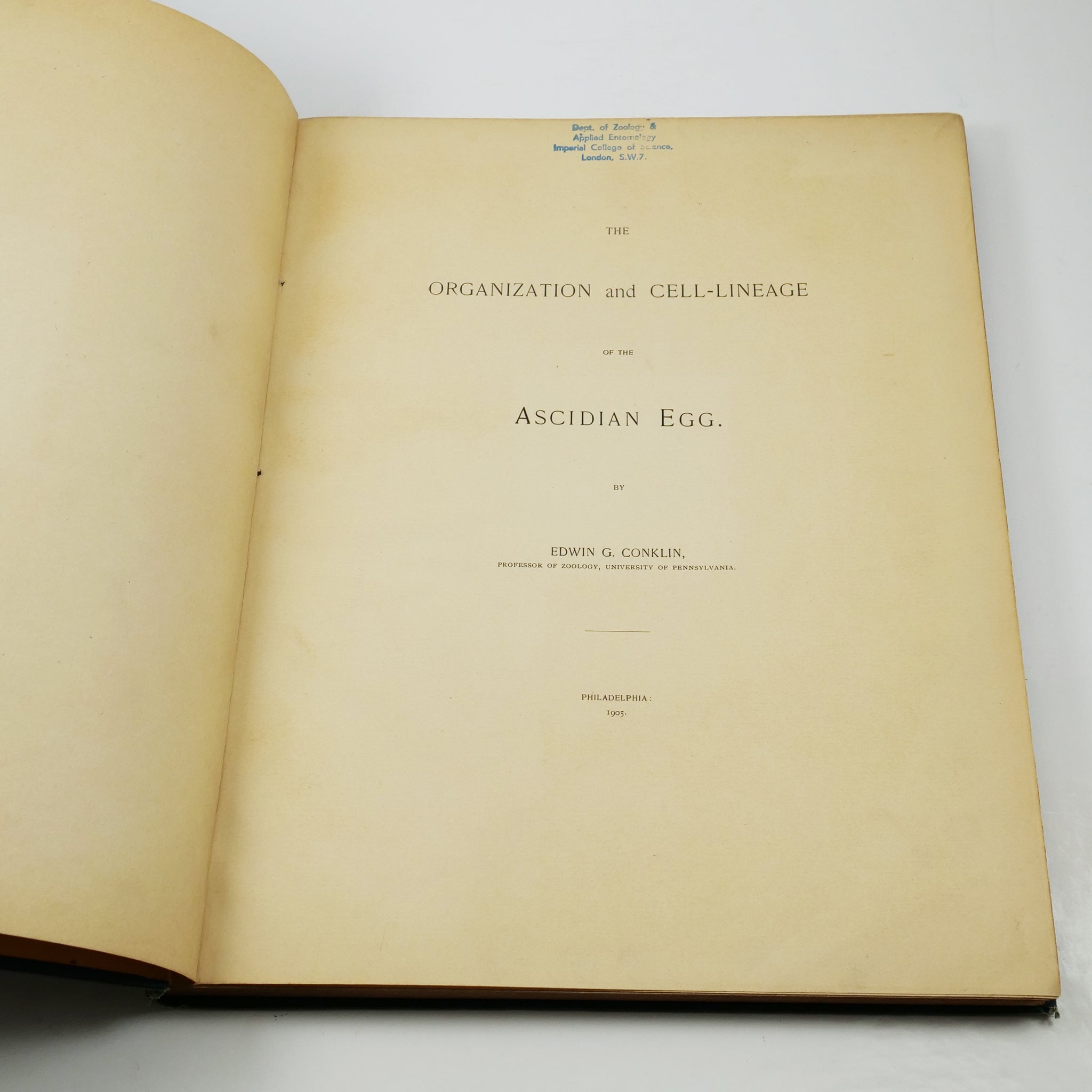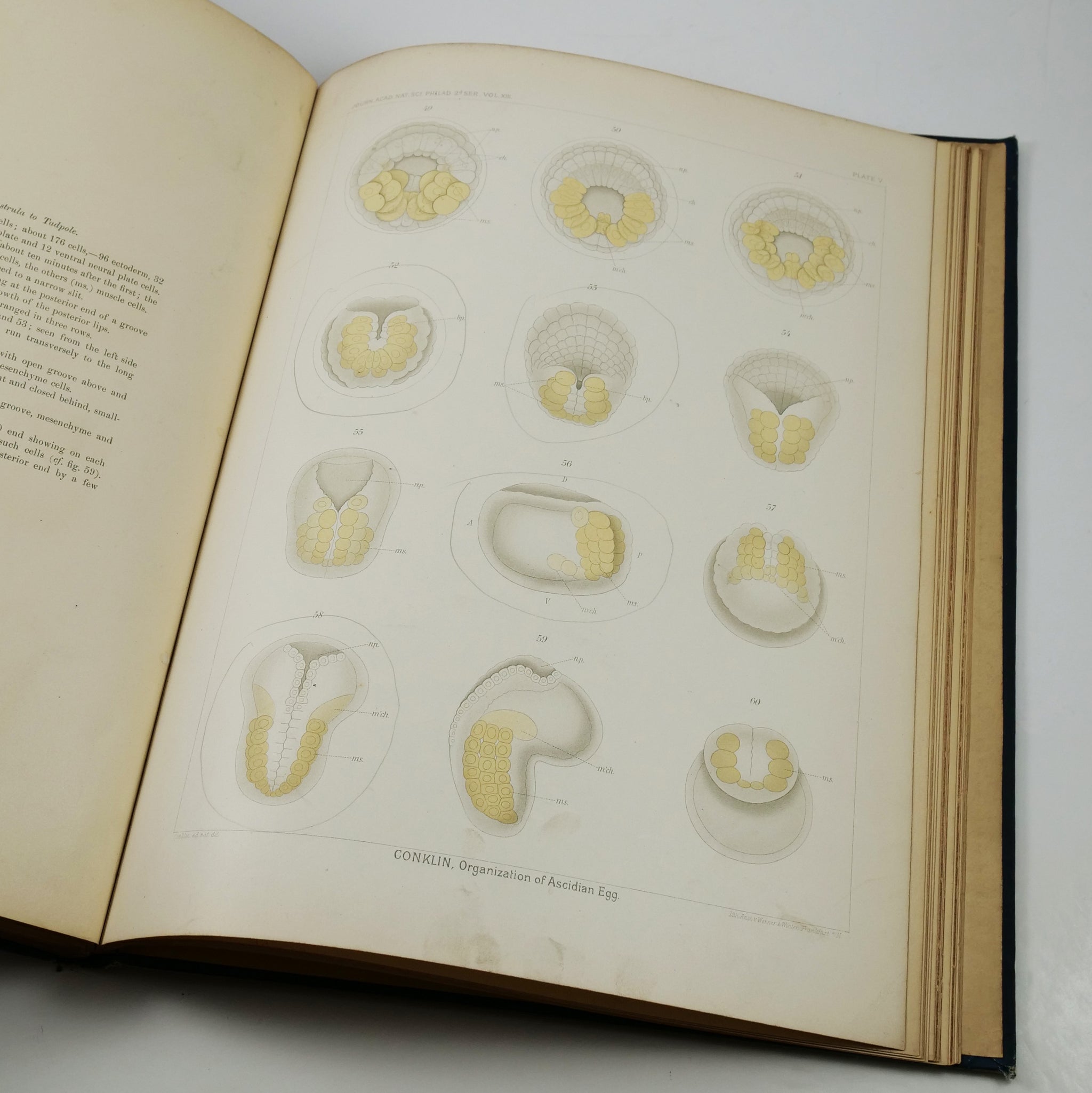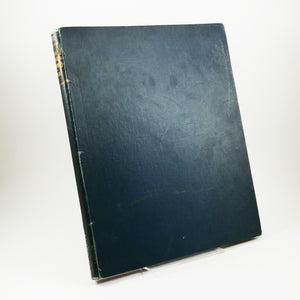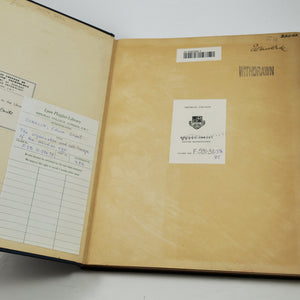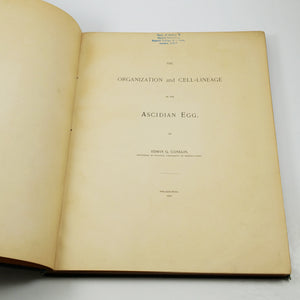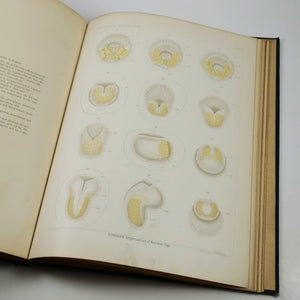Conklin, Edward Grant | The Organization and Cell-Lineage of the Ascidian Egg
£450.00
-
First edition, first printing of a foundational work in embryology. This copy from the library of marine biologist Ernest William MacBride, who donated it to Imperial College Library, from which it was officially withdrawn. Rare in commerce.
Though he considered a religious career, Edward Grant Conklin’s (1863-1952) “burning interest was in biology, and he decided to enter the graduate school at Johns Hopkins University. Johns Hopkins was an extraordinary place to obtain a graduate education in biology because it was a relatively new school with revolutionary plans to integrate the experimental method into American biology... During the summer of 1890, Conklin was at Woods Hole in search of suitable material for his doctoral dissertation. He chose the marine snail Crepidula and discovered that its eggs divide according to a fixed pattern of spiral cleavage, which enabled him to follow individual cells and their descendants to their final places in the tissues and organs of the larva. He had performed one of the first cell lineage analyses, which were the rage at Woods Hole for the next decade. This experience also launched a lifelong love of the Marine Biological Laboratory at Woods Hole, where Conklin subsequently spent almost every summer. After graduate school, as a faculty member at Northwestern University and at the University of Pennsylvania, Conklin extended his cell lineage studies to the embryos of other animals, including the ascidian Styela. This was to be his most important and indelible work. Conklin found that Styela eggs showed different pigments, which were localized in the cytoplasm and after fertilization segregated into the progenitor cells of different larval tissues. The most spectacular of these regions was the yellow crescent, or myoplasm, which was deposited in the tail muscle cells of the tadpole larva. Conklin had discovered a natural cell lineage marker. More importantly, he had demonstrated that the undivided egg, far from being a homogeneous mass of protoplasm, possesses a remarkable degree of cytoplasmic organization” (Society for Developmental Biology biography).
The Swiss developmental biologist Walter Jakob Gehring would later describe the paper as a “milestone”, praising in particular its colour lithographs. “This article of 120 pages and 12 plates, including 5 color plates was published in the Journal of the Academy of Natural Sciences in Philadelphia which allowed him the use of colored plates, depicting among other things the yellow crescent, a fascinating structure in the Styeia embryo which still has kept some of its secrets. Originally I thought that Conklin had exaggerated he brilliance of the yellow crescent in his publication, but when I saw the crescent of Styeia for the first time through the microscope with my own eyes, I became convinced that Conklin's illustraions are completely accurate” (Gehring, “Precis of Edwin G. Conklin's JEZ article, ‘Mosaic Development in Ascidian Eggs’”, Journal of Experimental Zoology, vol. 301, no. 6, 2004).
Conklin was also “A strong supporter of the Eugenics movement” and “a member of numerous societies dedicated to the ideology of purifying the Human race of unwanted and unfavorable elements. Conklin was a charter member of the Galton Society, which was formed in 1918 by Madison Grant, as well as being director of the American Eugenics Society from 1923 until 1930” (The Embryo Project Encyclopedia).
The previous owner of this copy, Ernest William MacBride (1866-1940), spent most of his career as a professor of zoology at University College London and was one of the last professional biologists to support both the Lamarckian theory of evolution and the idea that embryological stages recapitulate a species’ evolutionary history. Like the author of this paper he was a prominent eugenicist, a supporter of forced sterilisation and of fascist dictatorships in Europe.
-
Philadelphia: Journal of the Academy of Natural Sciences, 1905.
Folio. Blue cloth library binding, blue morocco title label to spine. 12 plates of which 5 are colour lithographs. Ownership signature of E. W. MacBride to the front free endpaper. Library call numbers to tail of spine in white, Imperial College Library bookplates, bar code ticket, and lending card to the front endpapers with withdrawn stamps, library ink stamps to both sides of the title leaf. Cloth scuffed and marked with some worn areas along the joints and at the ends of the spine, title page toned, occasional light spots and marks to contents. Very good condition.

